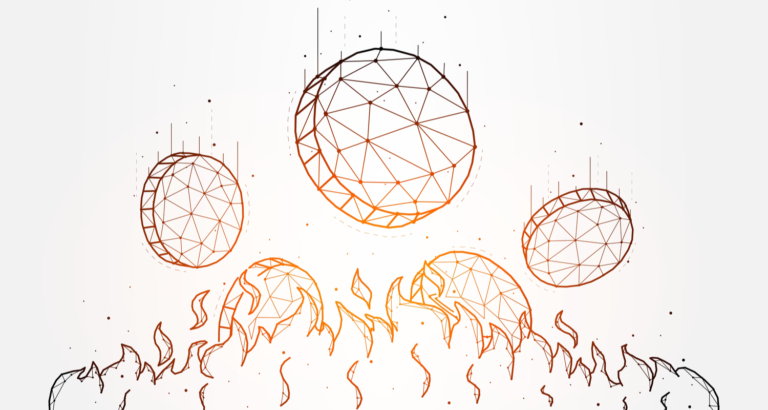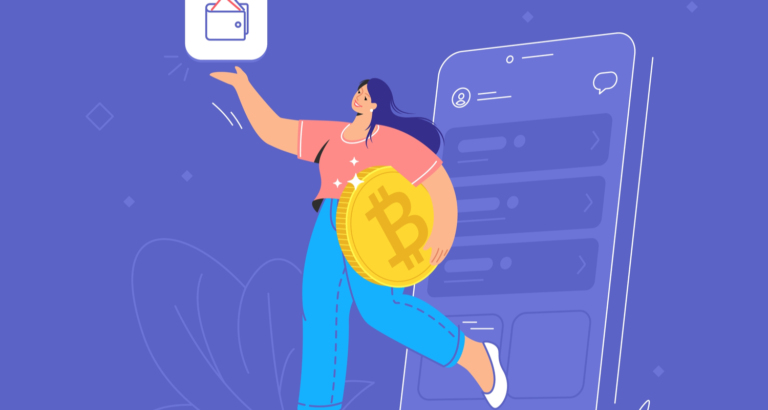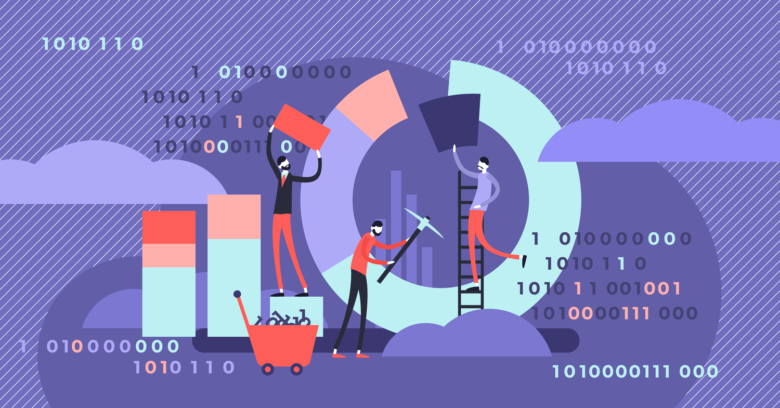Blockchain networks utilize a variety of methods to validate transactions made in the ecosystem. Proof of Burn (PoB), which is used to prevent the possibility of double-spending on any cryptocurrency, and enable the creation of a consensus of nodes on added blocks is one of them. The PoB is a consensus mechanism that makes adding new blocks to a chain conditional on burning existing cryptocurrencies.
The PoB method ensures coin miners build a consensus on making a proportion of existing coins unaccessable to generate new blocks. ”How can a coin be inaccessible in a fully decentralized ecosystem?”, you may ask. Well, burning is the name given when any cryptocurrency is removed from circulation, sending a wallet that cannot be used again by anyone.
KEY TAKEAWAYS:
- Transactions on the blockchain network need validation to be added as a new block on a chain, and Proof of Burn is one of the mechanisms that provide this validation.
- Proof of Burn provides insurance among coin miners to reach validated a consensus by burning coins to create new blocks.
- Proof of Burn is thought to be a more sustainable proof mechanism than Proof of Work because it doesn’t require a huge amount of energy to be used.
- Coins that will be burned are transferred to an inaccessible wallet address with no private key known by anyone.
Table of Contents
Proofing Systems: Mechanisms to Verify Transactions!
The blockchain consists of storage units that store all relevant information related to the transactions of a cryptocurrency. However, to generate a block, it is required that blockchain nodes reach a consensus on a set of transactions to approve its validity.
So why is such a validation practice needed? Blockchains are decentralized, and a mechanism is required to verify the validity of each transaction. Consensus mechanism algorithms solve the lack of validation through a consensus.
For example, in the Proof of Work (PoW) system, a miner who wants to get a reward by producing a new block on the blockchain has to solve a complex mathematical problem. Let’s say a BTC miner is entitled to a certain amount of BTC after solving the problem on the network. Since the BTC network is completely transparent, other miners in the network also verified the miner’s solution. As a result, the solved block is included in the network as long as there is no manipulation or deception.
Proof of Burn (PoB): The Alternative Proof Mechanism
Iain Stewart first described Proof of Burn as a more sustainable alternative proof mechanism to the PoW (Proof of Work). The aspect that distinguishes PoB from PoW most is that Proof of Burn offers reduced energy consumption.
While validating blocks through a PoB network, powerful computational resources and mining hardware are not needed. Instead, coin burning can be performed via virtual mining rigs.
To put Pob in a nutshell, when users eliminate a cryptocurrency from circulation by sending them to an inaccessible wallet, they get the right to mine a new cryptocurrency or verify transactions. Just like rituals in ancient tribes, users show their commitment to the network by burning coins.
Also, because coin burning is highly related to virtual mining power, the more cryptocurrency a user burns for the benefit of the chain, the more mining power they get, which means the chance of being selected as the next block validator increases.
How Does Proof of Burn Work?
Miners transfer cryptocurrencies to a completely inaccessible and useless address, such as an eater address with no private key. This burning process is fully verifiably and does not require much resource consumption. Then, miners can eliminate the native currency to receive a reward under the native currency of the blockchain in return.
- Burning Rewards – The working logic of Proof of Burn also provides passive income to users who are burning. Because for each coin burned, the blockchain rewards the person concerned in the network’s local currency. Participants can burn both their own money and money belonging to others.
- Switching Into A New Currency – Consider switching from an old currency to a new one on a blockchain network using Proof-of-Burn as a consensus mechanism. Normally, in the economy, such a transition would destroy the value of the old coin, cause trust problems in the network and result in a significant number of investors being victimized. However, a gradual proof-of-burn operation can allow the currency used in a network to change without such maximal changes.
- Avoiding Price Volatility – The working principle of Proof of Burn is to link the creation of new tokens only to the removal of old ones from circulation. This means that the total token supply cannot exceed a certain number. Proof of Burn runs slower than methods like mining and it is relatively difficult to find an inaccessible wallet on a different blockchain to send a coin to. So creating a new block is also considered quite difficult. This aims to avoid excessive fluctuation in the values of existing tokens. Because people who want to invest in the token will not sell and hold it, knowing that it is difficult to create a new block.
- Solving The Inflation Problem – In addition, the inflation problem that may arise due to the fact that there are too many relevant tokens in the market can be avoided with proof-of-burn. Because this consensus mechanism limits the total token supply and ensures that existing tokens are regularly removed from circulation.
- Protecting the Network – 51% attacks mean having 51 percent of the nodes reach a consensus at the same time in order to make a manipulative decision on the network. With the consensus method called PoB, this can be more difficult than other methods. Because being able to do this requires using the mining rig over time. However, the mining power of the rigs decreases over time and burning becomes more difficult. Therefore, the hacker will have to burn all 51 percent of the token assets that he controls in one step. This process requires a huge expense. So 51 percent attack becomes nearly impossible.
Advantages and Disadvantages of Proof of Burn
As we said above, the PoB is a method that is produced to be a more effective version of the PoW consensus algorithm and is thought to be more sustainable. But is it really so? We can answer this question by looking at the advantages and disadvantages of PoB.
| Advantages of Proof of Burn | Disadvantages of Proof of Burn |
|---|---|
| It offers less energy consumption | It is still a new method. Therefore, requires more time to prove its efficiency and security. |
| It is a more sustainable consensus mechanism | The verification process is slower compared to Proof of Work. |
| Burning diminishes the coin circulating supply | The verification process sometimes tends to be complex, not transparent, and hard to verify. |
| Miners are thought to commit more | It might not be eco-friendly due to burned Bitcoins produced through PoW |
| Coin distribution becomes less centralized | |
| Requires no mining hardware since burns occur virtually |
What Are The Current Implementations of Proof of Burn?
- One of the most recent examples of PoB is Slimcoin. Coin’s validation mechanism combines PoB and PoW. Because the number of blocks a user can mine is determined by the number of coins they burn.
- XCP, Counterparty’s native token, also uses Proof-of-Burn as its consensus mechanism.
Differences Between Proof-of-Work, Proof-of-Stake, and Proof-of-Burn
You know that there are multiple consensus mechanisms that can be used in blockchains. Among the most popular of these are PoB, PoW, and PoS. Understanding the difference between them can be helpful for understanding PoB.
| In the PoB mechanism, tokens sent to an inaccessible wallet are removed from circulation forever. No one can recirculate those tokens, including their former owners. Instead, the total number of tokens showing proof of fuel is divided by the number of tokens in circulation. This number indicates how many new blocks will be created in the network. The total number of tokens to be found on the network will never exceed a certain number. |
| In the PoW mechanism, validation and new block creation are performed by mining. Miners solve complex problems on the network with powerful computers, and the first person to solve the related problem adds a new block to the network. Each block gives the corresponding miner a block reward. This validation system prevents multiple people from adding the same block and prevents network manipulation. |
| PoS was developed to avoid the huge energy consumption required by the PoW mechanism. This mechanism does not require powerful computers or competing miners. All that is required is for those holding the relevant asset to stake them. Staked tokens are used as nodes to validate transactions on the network. Therefore, the more assets you stake on the network, the more likely you are to be chosen and earn staking rewards during a random validator selection. In this system, the staked coins can be accessed by the asset holders again. That is, they are not completely removed from circulation. |
How does Proof of Burn work?
Coins to be burned are sent to a verifiable-by-public address where they cannot be reached or spent.
What is the purpose of Proof of Burn?
Proof of burn is idealized to prevent fraudulent behaviors on a blockchain while also improving transaction efficiency.
What is the purpose of Proof of Burn?
Proof of burn is idealized to prevent fraudulent behaviors on a blockchain while also improving transaction efficiency.
Is Proof of Work secure?
PoB mechanism is thought to be secure since users demonstrate their commitment to the blockchain by burning coins.
What is the difference between Proof of Work and Proof of Burn?
Proof-of-burn (PoB) offers less energy consumption via virtual mining rigs than proof-of-work (PoW).
Who created the Proof of Work?
Proof of Burn is a blockchain consensus mechanism that Iain Stewart firstly describes.







